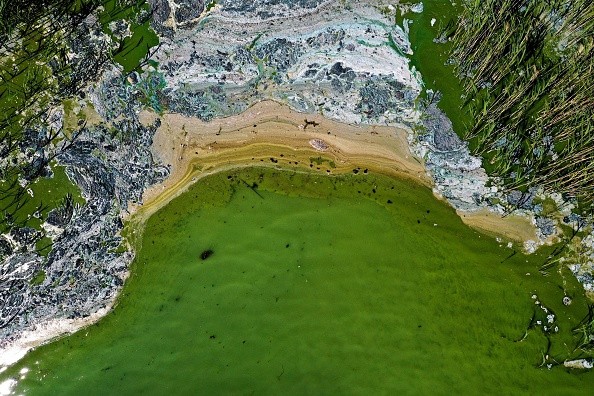
The end-Permian mass extinction event, which occurred around 252 million years ago and was the worst in earth's history, has been connected to massive volcanic emissions of greenhouse gases, a significant temperature rise, and the extinction of nearly every life in the seas and on land.

Causes of Extinction During Severe Warming Events
Even the lakes and rivers seem to be no longer secure havens. Professor and Head of the Department of Geosciences Tracy Frank and Professor Chris Fielding, both new to UConn, have uncovered a new cause of extinction during severe warming events: toxic microbial blooms, according to a recent study published by an international team of researchers.
Microscopic algae and cyanobacteria supply oxygen to aquatic creatures as a waste product of photosynthesis in a healthy habitat. These microorganisms, however, deplete free oxygen and even discharge poisons into the water when their numbers go out of hand.
The researchers uncovered numerous pulses of bloom incident shortly after the first volcanic rumblings of the end-Permian mass extinction by investigating the fossil, sediment, and chemical records of rocks near Sydney, Australia.
There was no one left to keep the bacteria in control when the bottom-feeding animals, or "detritivores," were eliminated. The freshwater systems eventually became infested with algae and germs, potentially delaying animal recovery for millions of years.
Frank and Fielding research about sediment, and Frank notes that their contribution to the project, which they worked on while both at the University of Nebraska-Lincoln, was gleaning facts about the ecosystem and the ensuing poisonous soup from the layers of sediment.
Also Read : Can Climate Change Drive Humanity to Extinction?
Ingredients For Toxic Soup
Accelerated greenhouse gas emissions, high temperatures, and an abundance of nutrients are the three primary component of the toxic soup. The first two were caused by volcanic eruptions, while the third was caused by abrupt deforestation.
When the trees were cut down, the soils spilled into the rivers and lakes, supplying all of the nutrients the bacteria needed.
When the researchers studied the fossil records of several warming-related mass extinctions, they discovered that the data were very similar. This suggests that poisonous microbial blooms are a frequent cause of freshwater extinction during high warming episodes.
Humans have been following this formula, and freshwater microbial blooms have been on the increase, demonstrating the importance of the geosciences in knowing the past in ways that provide critical context for understanding current climate change.
Reserchers can get a sense of how much climate has changed in the past, what the extremes are, how rapidly it can change, and what the drivers of climate change are, and that provides them with a wonderful background for understanding what's going on today, Frank says.
Effects of Toxic Algae Bloom on the Ecosystem
The impact of humans on climate change is "unequivocal," according to the Intergovernmental Panel on Climate Change (IPCC) report released this year, creating circumstances that encourage the expansion of these warmth-loving bacteria.
Toxic blooms have increased dramatically as a result of an inflow of nutrients from water contamination, mostly from agriculture and forestry. This results in massive fish extinctions, significant human and cattle health consequences, and a yearly cost in the billions of dollars.
Another important comparison is that the rise in temperature near the end of the Permian was accompanied by large increases in forest fires.
Fire was one of the factors that devastated awhole ecosystems, as one can see in areas like California right now. One has to question what the long-term repercussions of such incidents will be as they become more common.
For more news, updates about extinction and similar topics don't forget to follow Nature World News!
© 2025 NatureWorldNews.com All rights reserved. Do not reproduce without permission.





